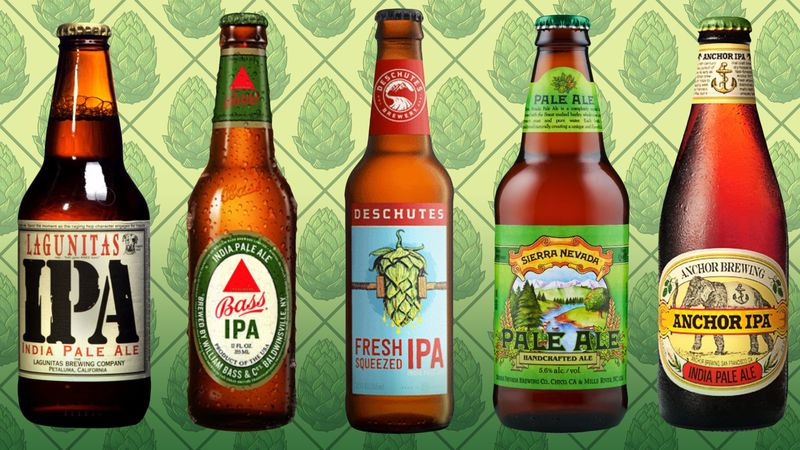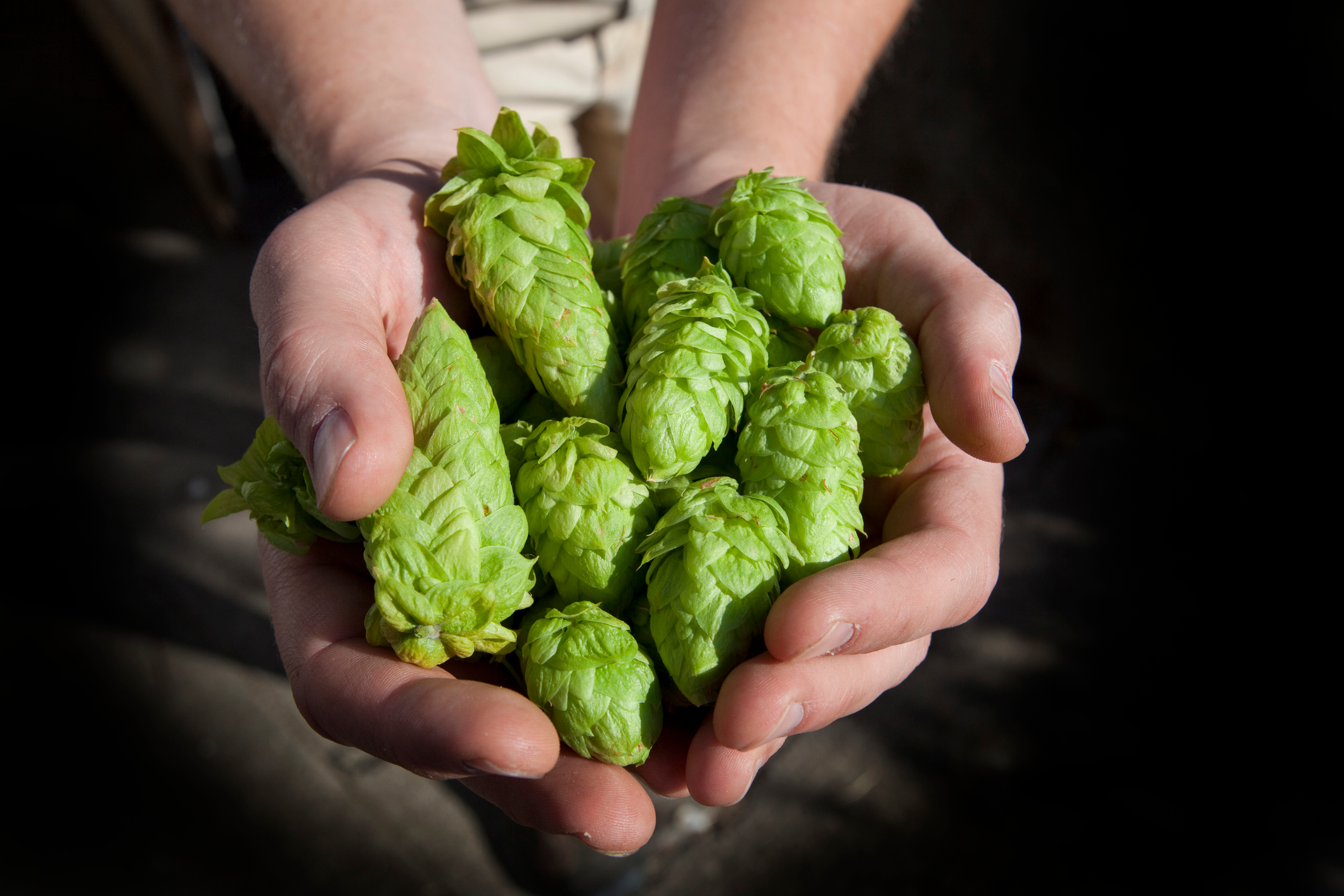Where To Hop Into The Bitter World Of IPAs
Welcome to Gateways To Drinkery, where The Takeout offers an entry-level course on our favorite libations, and some suggestions on where to start drinking them.
India Pale Ale
The lowdown: For those who want to gain entry to the craft beer community, India Pale Ales have become the not-so-secret handshake. Can you appreciate its strong, bitter notes and discern the idiosyncratic spin different brewers add? If so, beer nerds welcome you with open arms. Among the members of this once-exclusive club, the IPA is regarded as a mainstream exemplar of what craft beer has to offer, with 7 million barrels sold in 2015 alone.
The beer that eventually would be known as IPA developed over many years as English brewers altered their pale beer recipe to appeal to British occupiers on the Indian sub-continent. A lengthy boat ride helped define the style: Traveling from England to India in colonial times took six months by ship. Thanks to that constant motion on the seas, the beer fermented more efficiently—meaning more of the sugars turned into alcohol—resulting in a stronger brew. Plus, the extra hops that preserved the beer on the long journey added a bitter flavor that tasted great in the Indian heat. The style gained widespread popularity as English drinkers returned home with it from India (despite a few unfortunate accusations of strychnine being used to boost the bitterness). Bass Brewery's IPA was so popular in the late 1800s that it was granted the first English trademark for its red triangle logo to ward off imitators.
Of course, the IPAs of colonial times hardly taste like the ones we drink today. Credit that to the West Coast brewers in the 1970s who used American hops. Sierra Nevada and Anchor were among the early breweries to sell this variety, which showcased the piney, fruity characteristics of "New World" hops (though neither used the term IPA). Back then, it was a real shock to commercial beer sensibilities; the robust, full-bodied pale ales made bland-by-comparison lagers taste like foamy water.
IPA is a beer that demands the drinker to choose sides. As you drink an IPA, you feel a connection with the brewer by considering which hop varieties they chose and how they coaxed flavor from the little green flowers. It's why IPAs prove so difficult to scale for big beer manufacturers. The aroma and delicate hop flavors are far superior when the beer is fresh; the older they get, the more astringent the aftertaste. The advantage naturally goes to microbrewers, which is why IPAs are so ubiquitous in the craft beer world.
The taste: The qualities of an India Pale Ale are rather idiosyncratic, but all hit some basic notes. The smell should be dank and vegetal. Once you sip, the taste will at first be sweet, followed by a wave of bitterness and some hoppy hints of pine needles or grapefruit, and ending with a dry finish. You should taste at least some semblance of malty caramel, though this should be a distant second to the hops. As you swallow, the bitterness of the hops should dissipate slightly. If the hops taste astringent, that's a sign your beer is probably old. Particularly with American IPAs—and really, beer in general—fresh is always best.
Possible gateway: Lagunitas, founded in Petaluma, California, produces one of the most popular IPAs in the world. Chances are your neighborhood bar has it in stock. Lagunitas uses a well-balanced combination of hops to keep the flavor from going too piney or too fruity. It's also no secret that Chicago-born founder Tony Magee enjoys, ahem, the occasional toke, so you might note some similarities between this IPA and the downwind waft at a Grateful Dead concert. And while Lagunitas is one of the bigger brands, it tackles the problem of maintaining freshness—while also moving toward worldwide distribution—by using its part-owner Heineken's brewing facilities in Europe and Asia, along with building breweries in Chicago and Southern California, to ensure fresh IPA reaches drinkers everywhere. It's become so popular, you might even have luck finding it in more non-craft beer gatherings, such as at a wedding or your hotel mini-bar.
If you can't, you might also be able to find Deschutes' Fresh Squeezed IPA. Available in most states, it offers a great example of the citrusy side of hops, bordering on beer and orange juice mixed together. Though really, the freshest IPA from whatever brewery is nearest your town is likely to offer a more memorable experience than anything you buy in a store.
Next steps: One of the most buzzed-about beers among beer nerds these days is The Alchemist's Heady Topper. While this is technically a Double IPA (meaning it's hoppier and more alcoholic than a standard IPA), it's probably only worth checking out if you've learned to love regular IPAs. One impediment is it's incredibly hard to procure. It's not sold outside Vermont, where the local beer geeks are so obsessive, many know its retail delivery schedule by heart. Offering more than just the contact high you might get from Lagunitas, Heady Topper brewer John Kimmich claims his goal was to make a beer that actually tastes like weed. Many would say he succeeded.
If you can't score some Heady Topper, shoot for one of the beers it inspired: the latest IPA trend of hazy "New England style" or "milkshake" IPAs. These beers smooth out the rough corners of bitterness while accentuating the fruity, juicy aspects of hop flavors, along with having a pleasantly creamy texture. Some, such as Tree House Brewing's Julius, get their opaque look by not filtering the debris left from flaked grain, hop particles, and a very specific yeast. Others, such as Corridor Brewing's Wizard Fight, add lactose (milk sugar) and a nitro tap as well to achieve the creamy effect.
Talk like an expert: If you want to sound like you know IPAs, focus on hop talk. Refer often to the "C" hops: Citra, Centennial, Chinook, Cascade: "Man, I was crazy about Citra hops two years ago, but now I'm all about this experimental hop that doesn't even have a name yet. I had it in a brewpub-only IPA from Three Floyds."

